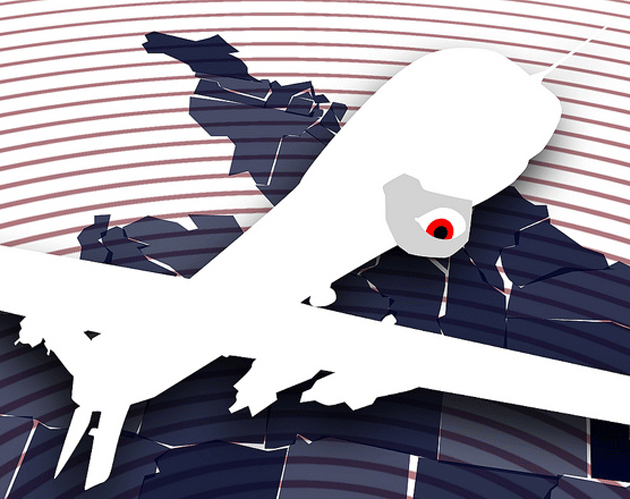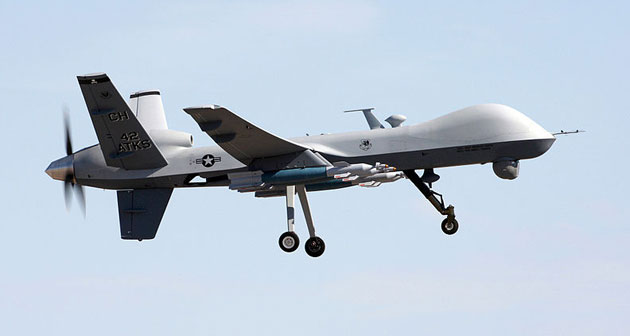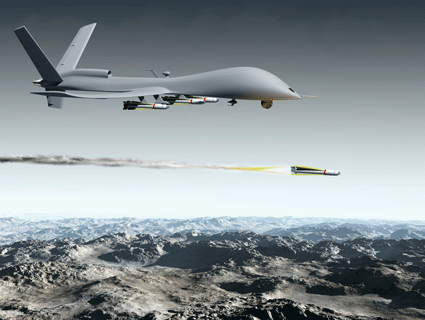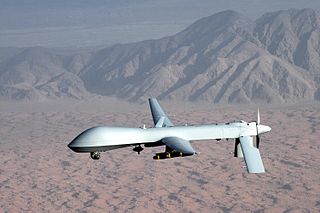
<a href="http://www.flickr.com/photos/truthout/6318781613/">Truthout</a>/Flickr
Update: Yesterday the Washington Post reported that Obama administration officials say drone strikes in Pakistan have been “sharply curtailed” at the request of the Pakistani government while it pursues peace talks with the Taliban. The administration says it will still carry out strikes against senior al-Qaeda targets if they pose a direct, imminent threat to Americans. Meanwhile, drone strikes have continued in Yemen, where a missile attack on a wedding convoy killed at least 11 people in December.
On January 23, 2009, President Barack Obama authorized his first drone strike. The attack, launched against a compound in northwestern Pakistan, killed between 7 and 15 people—but missed the Taliban hideout the Central Intelligence Agency thought it was targeting. Over the next five years, the CIA carried out more than 390 known drone strikes in Pakistan, Yemen, and Somalia. (The agency carried out 51 drone strikes between 2004 and 2009, during the Bush administration.)
Obama made a brief reference to the drone campaign in last week’s State of the Union address, assuring Congress that “I’ve imposed prudent limits on the use of drones.” This wasn’t the first time the president had acknowledged the need for a clear drone policy. Last May, Obama remarked at the National Defense University, “This new technology raises profound questions—about who is targeted, and why.” Yet the answers the administration has provided to these profound questions and the prudent limits it has put in place remain vague.
Here are six major questions about the US drone program that remain unanswered a decade after the first strike:
1. Who’s being targeted?
A declassified summary of the Presidential Policy Guidance states that “the policy of the United States is not to use lethal force when it is feasible to capture.” If capture is feasible, “lethal force will not be proposed or pursued as punishment or as a substitute for prosecuting a terrorist suspect in a civilian court or a military commission.” According to the Obama administration, lethal force can only be used against “Al Qaeda and its associated forces.” Yet as an investigation by McClatchy DC reported last year, the administration has not publicly identified any Al Qaeda-associated forces beyond the Afghan Taliban. McClatchy’s review of top secret US intelligence reports covering most drone strikes in Pakistan between 2006 and 2008 and between 2010 and 2011 showed that “drone operators weren’t always certain who they were killing despite the administration’s guarantees of the accuracy of the CIA’s targeting intelligence.” More than half of the 482 people killed between September 2010 and September 2011 were not senior Al Qaeda leaders but were “assessed” as Afghan, Pakistani, or unknown extremists. Drones killed only six top Al Qaeda leaders in those months.
2. What constitutes an “imminent threat”?
The Presidential Policy Guidance outlines a number of conditions for the use of lethal force, including “a continuing, imminent threat to U.S. persons.” According to an undated leaked Department of Justice white paper, defining a target as an “imminent threat” does not “require clear evidence that a specific attack on US persons and interests will take place in the immediate future.” The ongoing threat of Al Qaeda plots and attacks, the paper explains, “demands a broader concept of imminence.” The DOJ memo argues that the United States should be able “to act in self-defense in circumstances where there is evidence of further imminent attacks by terrorist groups even if there is no specific evidence of where such an attack will take place or of the precise nature of the attack.” This broad legal definition of “imminent threat” appears to allow the Obama administration to strike at any time.
3. What about signature strikes?
Apart from a kill list of targets, a key feature of the drone war has been the use of signature strikes—presidentially-approved attacks on targets displaying a terrorist “signature,” such as “training camps and suspicious compounds.” The administration has refused to acknowledge the use of these signature strikes or discuss their legal justifications. The CIA does not disclose what criteria it uses to identify a terrorist signature. This particularly challenging to do in the northwest of Pakistan, where militants and civilians may dress alike, and where openly carrying weapons is customary.
4. Does Congress really know what’s going on?
The House and Senate intelligence committees oversee the drone program, however their ability to set limits is severely constrained because the program is classified. Sen. Dianne Feinstein (D-Calif.), the chair of the Senate Select Committee on Intelligence, told The Hill last February, “Right now it is very hard [to oversee] because it is regarded as a covert activity, so when you see something that is wrong and you ask to be able to address it, you are told no.” The administration has repeatedly denied requests for further information from lawmakers. For instance, since 2011, 21 requests by members of Congress to access Office of Legal Counsel memoranda that provide the legal basis for targeted killings have been denied. The White House also refused to provide witnesses representing the administration at recent Senate and House Judiciary Committee hearings on targeted killings.
5. How are civilian casualties avoided—and counted?
The Presidential Policy Guidance states that lethal strikes may be carried out only with “near certainty that non-combatants will not be injured or killed.” However, the Obama administration counts all military-age males killed by drones as militants. That explains why official counts of civilian deaths vary widely from independent counts. While in Sen. Feinstein stated last year that annual civilian casualties from drones fall in the “single digits”, the Bureau of Investigative Journalism estimates that total civilian casualties since 2004 in Pakistan alone have ranged from 416 to 951.
6. How does the administration justify the targeting of American citizens?
In September 2011, Anwar Al-Awlaki, an American-born cleric, was killed in a drone strike in Yemen. A secret Department of Justice memo provided the legal justification for targeting an American citizen. The memo, obtained by NBC News, found that it is lawful to use lethal force in a foreign country against an American citizen who is a senior operational leader of Al-Qaeda or an associated force if a high-level official has determined that the individual poses an imminent threat, capture is infeasible, and the operation would be consistent the laws of war.
The memo notes that assassinations of American citizens in this manner are justified as long as civilian casualties aren’t “excessive.” Al-Awlaki’s 16-year-old son, Abdulrahman al-Awlaki, also an American, was killed in a separate strike two weeks later. When asked about the legal justification for his death, Obama advisor and former White House press secretary Robert Gibbs said that Abdulrahman al-Awlaki “should have (had) a far more responsible father.”

















